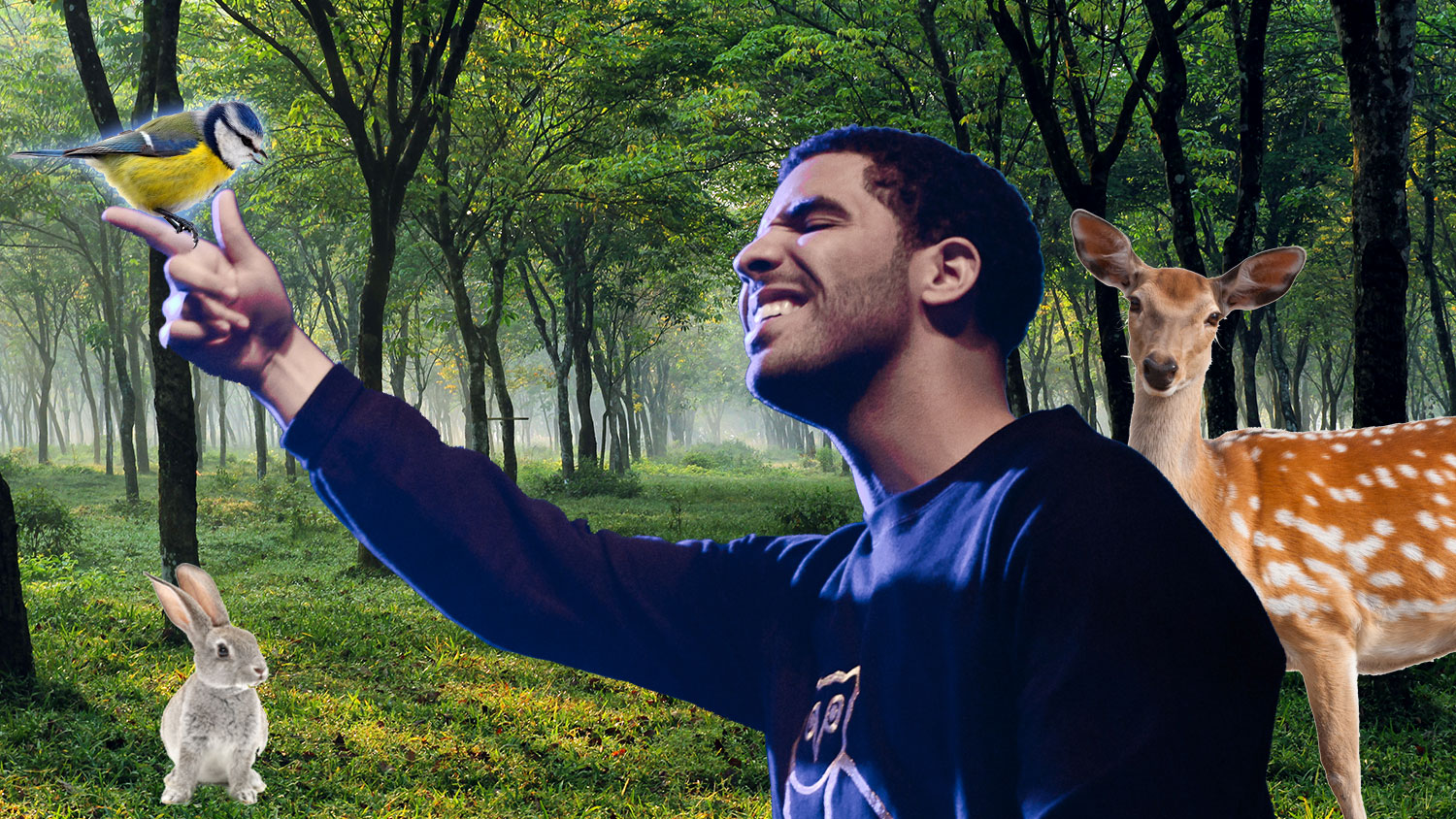Last night, Drake dropped an unannounced mixtape with the sort of genius title If You’re Reading This It’s Too Late. It had the intended effect — I was so panicked with joy that I actually bought the whole album on iTunes, which I haven’t done in years. But I fell in love with Drake when I first heard “Best I Ever Had” in my college boyfriend’s truck, and have followed the Canadian rapper’s resounding takeover of popular hip-hop since that moment.
Drake, in addition to being my favorite rapper, is one of the most successful image makeover stories in hip-hop. There’s been this refrain, for years, that those trying to fight for climate action need an image makeover for their message to gain popular traction. So why not take some lessons from the man born with the very unrap name Aubrey Graham? The same Drake who played “Wheelchair” Jimmy Brooks in the Canadian teen soap opera Degrassi: The Next Generation?
For those unfamiliar with Drake, here his evolution, told through two videos.
This is Drake now:
This is Drake then:
[youtube https://www.youtube.com/watch?v=iJ7UCm6uxNc]Which one of these guys would you rather take to a party? The dude awkwardly freestyling in a basement, or the one who can actually pass off a half-dozen gold owl chains at once — disregarding the fact that young Aubrey Graham could absolutely never pass for someone who can legally purchase alcohol, even in Canada?
Here is the thing: Drake has really, really worked to turn his image around and get where he is today. He’s gone from a suburban Jewish kid who had to release his own mixtape to having real cred in the industry, sharing stages with some of the most-respected dudes in the industry: Kanye West, A$AP Mob, and even co-headlined a national tour this summer with rap veteran Lil Wayne — and yes, you’d best believe I was there singing every damn word to “The Motto.” Over the past five years, he’s been featured on so many songs in current popular hip-hop that his claim on “5 AM in Toronto” — Give these n****s the look, the verse, and even the hook / That’s why every song sound like Drake featuring Drake — is actually valid. This summer, he surpassed Usher (!) for having the most No. 1 tracks on the Hip-Hop/R&B Billboard chart of all time.
The majority green movement needs to work really, really hard to change its image, too. In the “cool” department, the green movement tends to be about exciting as a Canadian teen soap opera. Nature documentaries. Sixty-year-old white men in tie-dye protesting water contamination. People who really, really hate steak. Granted, this is a very specific subset — and none of these are even bad characteristics — but these archetypes aren’t exactly the makings of popularity.
Now that climate change, long pigeonholed as an “environmental” issue — although, really, it’s an “all humans” issue — has become one of great, great, great import, the image of those that talk about it most matters that much more.
When Drake released his first mixtape — self-awarely titled Room for Improvement — nine (!!) years ago, he was a deeply unlikely candidate for top rapper alive. Let’s identify some of the key lessons that Drake has taught us and that the green movement can take to heart:
1. Drake has surrounded himself with cool friends: As discussed, Drake has done tons and tons of songs with real rap royalty — one of his first singles, “Forever,” had Kanye, Wayne, and Eminem on the track. The green movement actually does have a few cool friends. Leonardo DiCaprio, self-identified environmentalist and starter on the Grist boyfriend roster, has an inimitable “I don’t care what you think about my life” style that makes him, frankly, one of the most appealing stars in Hollywood. But it never hurts to have more — especially, maybe, some in more diverse and wide-reaching spheres.
2. Drake does not go by “Aubrey Graham:” If your name objectively sucks, change it. In terms of catchiness and appeal, “environmentalist” is a nightmare. Come up with something else.
3. Drake has perfected swagger: There’s a saying — and I’m paraphrasing — that goes something like, if you say something enough times, it becomes true. Drake has claimed his spot as king of popular hip-hop enough times that when you hear the line “I’m the one, I’m the God, I’m the motherfucking legend” on the intro song of If You’re Reading This It’s Too Late, you actually believe him. If enough green-minded people with a touch of cultural cachet would just start to own fucking composting and bike-riding as the most swag thing you could possibly do, it just might be crazy enough to work.
4. Drake manages to be very, very relatable: “Marvin’s Room,” arguably the most Drake of all Drake tracks, is entirely about drunk-dialing your ex to let her know that you still think about her all the time. Drake somehow, while still fitting in verses about private jets and stripper champagne parties, manages to be a guy who fucks up all the time just like you, but you still want to have his life. This is the sweet spot of aspirational messaging.
5. Drake does not deny his roots: Drake isn’t shy about giving shouts to the Old Aubrey — or acknowledging how he’s changed. On the brand-new “Star67:” I been had these visions of the life I’m livin’ since I was Jimmy / All I just had to do was go and get it. On “Worst Behavior:” This ain’t the son you raised who used to take the Acura / 5 a.m. going to shoot Degrassi up on Morningside.
6. Drake is still 100 percent true to himself: No need to change the message, greenheads. Drake has three interests, and they are: drunk-texting strippers, the convergence of steak and champagne, and sadness. Guess what he talks about in every single song? And guess what every single Drake fan wholeheartedly sings along to? It’s all in the delivery.
If you want people to take you more seriously, look to someone who’s turned their whole image around and killed it. Look to Drake. Also, listen to his new mixtape, because it’s truly great.



